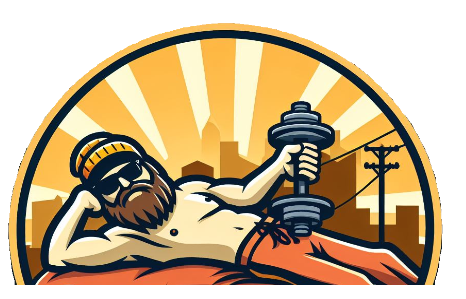Better Me for a Better Me.
You’re probably tired of promises that you can lose weight in 7 days or even 5 days. So today, I’m going to be talking about Better Me, which isn’t a magic bullet but a fresh perspective on self-improvement that you might find genuinely worthwhile.
Better Me is anchored in a holistic approach to personal development. It’s not just about hitting the gym or setting productivity records; it’s about nurturing every aspect of your being, from your physical health to your mental well-being, emotional balance, and even social connectedness.
At its core, Better Me encourages you to look inward and focus on sustainable growth that resonates with your personal values and life goals. This methodology supports the idea that a better you emerge from harmony and balance, rather than relentless striving and comparison.
In my opinion, what makes Better Me stand out isn’t just its comprehensive take on growth but also how accessible it is.
Regardless of where you’re starting from or how many times you’ve tried to ‘reinvent’ yourself before, there’s a place for you here. It’s about progress, not perfection.
Now, let’s take a closer look at Better Me from my experience.
What I have Found
I have now been using the Better Me App for 5 days. I purchased at a slightly discounted rate of about $10 US dollars per month. I first thought that was quite expensive for 1 month. At that stage, all I wanted was an app that allowed me to do chair yoga.
I chose this because I had a stomach operation for a benign tumor several years ago, and they cut through all my stomach muscles to get to it. So I was looking for something light and easy.
I have so much more, let me first explain what comes with the app. And yes it is very extensive and justifies the cost.
The Main Parts of Better Me
Better Me has both a website and a phone app. I went with the App because if I carry my phone around, it records the steps and amount of miles I walk every day. It also calculates the calories you burn against what you take in. Logging your meals and snacks is all done manually.
You also have to log in extra activities like swimming manually. However, I have set it up with my health app on my iPhone so I am discovering a lot can be put on automatically. My next step, pardon the pun, is to purchase a fitband and I will be trialling out a few soon with recommendations for the best and cheapest.
The Main Settings.
The main settings on the app are:
Log Calories.
This is where you log the meals you eat throughout the day. breakfast, lunch, dinner, and snacks. You can add different foods and choose the number of calories associated with that food. For example, I live I Vietnam and a lot of the food I eat here is not listed but I can add it manually and it stays in my account. I do not have to add it each time
Drink Water.
Here you add the amount of water you drink every day and it adds it up for you to make sure you are drinking enough.
Reach Step Goal.
The number of steps you do every day are logged here automatically if you carry your phone or wear a fit band. It also breaks it down into the number of calories you burn and the distance you walk. It also shows a weekly average.
Do Your Workout.
Do the workout you chose when you signed up. I signed up for chair yoga and the workout automatically loads and it prompts you to do it every day. You can do more if you wish or just complete what you wish, even opting out if it is too much.
It also shows the total calories you have burnt throughout the day and it allows you to add extra activities, even cleaning the house.
Start With Your Mind.
Motivation as well as self-love is all covered in this area. A great place to start for those who may find it difficult to start.
Workouts.
There are 34 different workouts you can do and 2 extra you can sign up for extra cost. It includes activities for all fitness levels from beginners to gym Junkies.
Some of the areas that are covered are Running, Chair Yoga, calisthenics, H.I.T Workouts, Military boot camp, Tai Chi, Pilates for seniors, and more. So you can see there is something for everyone.
Personal Coach.
If that isn’t enough you can choose your own personal trainer from a selection of 5 people with a “Best Match” selection.
I am a bit worried about who they chose for me as he looks like a real taskmaster. Choosing a personal coach does not come with the subscription.
You have to pay more. Up to $50.00US and funny enough was offered the most expensive first, even though it did not match my lifestyle and exercise plan.
Challenges.
From Muscle building for seniors to sugar-free or no-alcohol challenges, there are many that you can do. However, these all come at an additional cost and I have not tried them.
Fasting.
The fasting feature comes free and works surprisingly well, as it tries to take in the hours you sleep.
I am not a huge fan of fasting because when you eat again, or at least me, I tend to eat more than normal. But it is there if you want it.
Meals.
Meals gives you anumber of recipes that look easy to follow, but the ingredients may be more expensive than your normal food budget.
I have noticed that eating healthy costs more than eating unhealthily.
However, there is a good range of food for different tastes but for me, in Vietnam, some of the food stuffs are difficult to find.
Also, I have found most of these recipes online that look like they have been lifted from other websites. So it might be best to look online directly yourself for healthy recipes.
Tips and Articles.
Daily tips and topics from diet to exercise. Useful to some but not for me.
Help.
As it says, help, if you are having missing features, technical issues, billing or subscription inquiries or just looking for fitness advice.
Better me Band.
A band that costs about $60 US and tracks your daily activities. I have not tried It but I will include it in my next post about fitness bands.
Better Me Store
The Better Me store at first glance looks like it is directed toward women as the first products you see are yoga shorts, tops, mats, etc. The clothing looks great if you are tall and skinny but if I was a girl and wore that stuff my belly would be hanging over my skimpy shorts.
And the more I looked, I could not find any men’s clothing at all. Do they think men don’t wear exercise clothes or we don’t care? A bit disappointing.
I will buy elsewhere that has baggy T-shirts and shorts that fit.
Has It Helped?
It has only been 5 days and I have already noticed my stomach becoming flatter and more toned. My wife has also commented that my skin looks better and I look younger and have lost a bit of weight.
Also, I notice I have more energy throughout the day. Am I a youngster, no, I am 66 years old and already feel younger with this app.
Some of the extras cost money and I have the feeling a lot of this is AI-driven, however even using the basic tools will help you lose weight.
After 25 days I feel better however some things could be done better. For example, I hurt my knee during exercising and there should be, in my opinion, an area where you can find resources that will help with potential injuries.
I would rate this APP 6.7 out of 10.
So, am I happy with this app, Yes I am. I do not make a commission from this post about better me, to keep it fair.
Steve
Some links on this site may be affiliate links, and if you purchase something through these links, I will make a commission on them. There will be no extra cost to you and, you could save money. Please read our full affiliate disclosure. here.
Some of this content was AI-generated.


